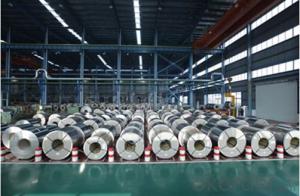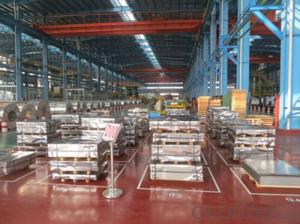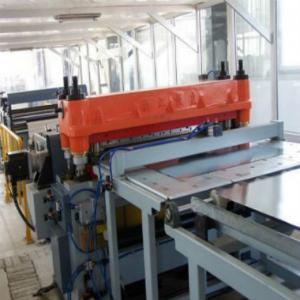Tinplates for American Market with Fine Stone Surface
- Loading Port:
- Shanghai
- Payment Terms:
- TT OR LC
- Min Order Qty:
- 50 m.t.
- Supply Capability:
- 1000 m.t./month
OKorder Service Pledge
OKorder Financial Service
You Might Also Like
1.Structure Description
Electrolytic Tinplate Sheets is one of the metal packing materials, which is widely used for making painting cans ,chemical package cans , electrical cable ,battery and metal printing etc.
2. Main Features
Steady and high quality
Fast shipment
Good experience for export work
For the surface, Plate uniform in thickness,uniform and smooth tin coating, without flaws,rusts,scratch,wave,nick of tin coating etc.
Price competitive
3.Images

4. Specification
Standard : GB2520-2000 ,JIS G3303
Steel type : SPCC,MR
Coating : 2.8/2.8
Surface: Bright, Stone ,
Thickness:0.18
Width :600MM~1000MM
Temper : T1~T5,DR8
Package: tinplate wrapped completely with an inner cover of plastic or waterproof papers with vorners protected with metal angels.
5.FAQ
A. What is the package of tinplate? (Referred as below)
For sheets, thin plastic film + rust-proof paper + metallic cover + metallic angles+ steel band strips + fumigated wooden pallet.
For coil, thin plastic film + rust proof paper + metallic cover + steel band strips + fumigated wooden pallet
B. The surface of tinplate could you supply?
Stone finish, Bright finish, Matte finish, Silver finish
C. What quantity is the minimum order of tinplate?
Usually, the minimum quantity is 25MT. For special case, consult with us.
D. Can it make to be BA or CA for annealing?
Yes, both can do with.
- Q: How does tinplate perform in terms of heat resistance?
- Tinplate offers moderate heat resistance, as it can withstand temperatures up to around 250 degrees Celsius without significant deformation or damage. However, it is not suitable for extreme heat applications and may lose its structural integrity or experience discoloration at higher temperatures.
- Q: Can tinplate packaging be used for automotive products?
- Yes, tinplate packaging can be used for automotive products. Tinplate is a durable and corrosion-resistant material, making it suitable for protecting automotive components such as spare parts, lubricants, and chemicals. Additionally, tinplate packaging can be customized to meet specific requirements, ensuring the safe transportation and storage of automotive products.
- Q: What are the advantages of using tinplate in packaging?
- Tinplate offers several advantages in packaging. Firstly, it provides excellent protection against corrosion, ensuring the contents remain safe and unaffected. Additionally, tinplate is lightweight yet durable, making it easy to transport and handle without compromising strength. It is also highly malleable, allowing for intricate designs and shapes, enhancing visual appeal. Furthermore, tinplate is eco-friendly as it is recyclable and can be reused multiple times, promoting sustainability in packaging solutions.
- Q: Can tinplate be customized with different designs or logos?
- Yes, tinplate can be easily customized with different designs or logos. Its smooth surface allows for high-quality printing, making it an ideal choice for branding and promotional purposes.
- Q: How is tinplate affected by exposure to oxygen?
- Tinplate is prone to oxidation when exposed to oxygen, leading to the formation of a tin oxide layer on its surface. This oxide layer can impact the appearance, adhesion, and corrosion resistance of the tinplate.
- Q: What industries commonly use tinplate?
- The industries that commonly use tinplate include the food and beverage industry, packaging industry, automotive industry, and electronics industry.
- Q: How does tinplate compare to plastic packaging?
- Tinplate packaging offers several advantages over plastic packaging. Firstly, tinplate is more durable and can withstand higher temperatures, making it suitable for preserving food and beverages. It also provides better protection against external factors such as sunlight, moisture, and oxygen, thus ensuring the longevity and quality of the contents. Additionally, tinplate is fully recyclable and has a higher recycling rate compared to plastic, making it a more sustainable choice. Lastly, tinplate packaging has a premium appearance that can enhance the product's perceived value and appeal to consumers.
- Q: Can tinplate be used for packaging confectionery products?
- Yes, tinplate can be used for packaging confectionery products. Tinplate is a popular choice due to its durability, ability to retain the quality and freshness of the confectionery, and its resistance to corrosion. It also provides a visually appealing and customizable packaging option for confectionery products.
- Q: What are the main factors influencing the consumer preferences for tinplate packaging?
- The main factors influencing consumer preferences for tinplate packaging include its durability, recyclability, and ability to preserve the quality and freshness of products. Additionally, the aesthetics, brand reputation, and cost-effectiveness of tinplate packaging also play a significant role in shaping consumer preferences.
- Q: What's the advantage of metal containers in packing tea?
- General metal cans are divided into three kinds of tinplate (also known as: tin iron) tin cans, aluminum cans
Send your message to us
Tinplates for American Market with Fine Stone Surface
- Loading Port:
- Shanghai
- Payment Terms:
- TT OR LC
- Min Order Qty:
- 50 m.t.
- Supply Capability:
- 1000 m.t./month
OKorder Service Pledge
OKorder Financial Service
Similar products
Hot products
Hot Searches
Related keywords






























